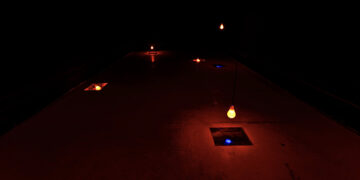建于1941年的掩体建筑位于北京东城区张自忠路3号院,是当时驻华北日军司令冈村宁次的地下工事。它所在的建筑群落见证了近代中国风云际会的种种历史时期——始建于1906年的清政府海军部和陆军部曾经在此办公,至民国黎元洪任总统时期,这里变为总理段祺瑞的执政府所在地,而在1949年建政后,又长期作为中国人民大学的校址。自2017年起,承载当代艺术诸多实验与思考的掩体空间重又令历史遗迹产生别样活力。
作为非营利性机构,掩体空间本着开放之态度、独立之精神,力求选取具有空间针对性、实验性、观念性的艺术方案,以及对自身固有的艺术体系构成挑战的方案予以呈现并加以研究。
Built in 1941 at No. 3 Zhang Zizhong Road, Beijing,the building that houses The Bunker was originally used as the under ground command centre for General Yasuji Okamura, commander-in-chief of the Japanese occupying forces’ Northern China Area Army. The architectural compoundit is part of was central to the turbulent times of early China republican history. It was originally constructed in 1906 to house the offices for the Qing Dynasty’s navy and army until the rule of President Li Yuanhong of China’s Republican era, and then it became the administrative offices for Priemier minister Duan Qirui of the Nationalist government. Ever since 1949 it has been used by People’s University. In 2017, The Bunker is being established at this historically loaded site to provide a platform for artistic experimentation.
The Bunker is an independent non-profit contemporary art platform that aims to nurture experimental, conceptual, site-sensitive work, as well as work that departs from an artist’s own established practice. Art practitioners are invited to submit exhibition proposals which are selected by The Bunker’s artistic committee.

